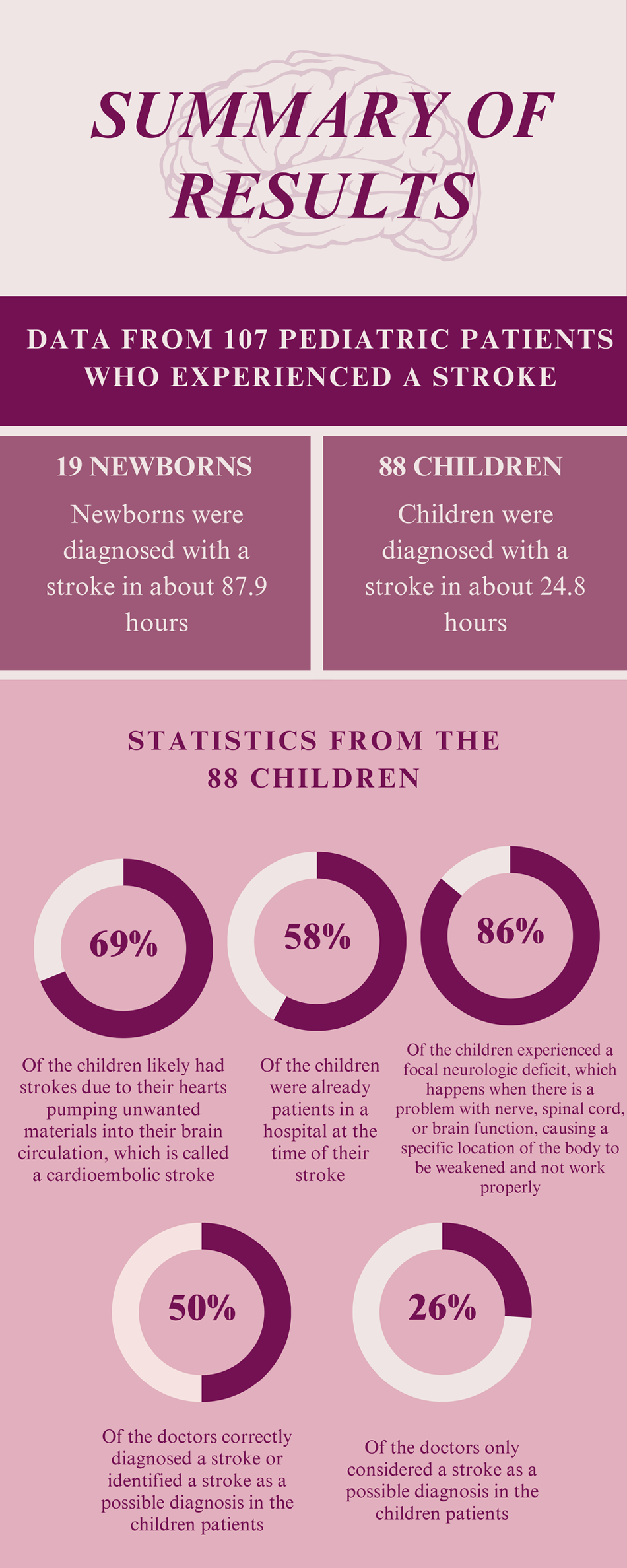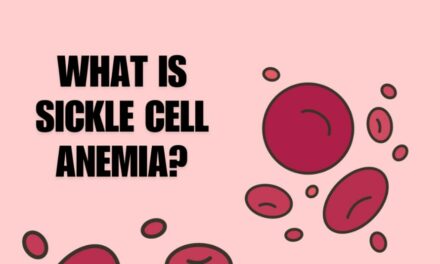Objective: The goal of this study was to identify how long it takes to diagnose an arterial ischemic stroke (AIS) in children. This type of stroke occurs when an artery gets blocked by a blood clot, compressed from the outside, or damaged, stopping oxygen from reaching parts of the brain. For reference, an artery is a blood vessel that takes oxygen-rich blood from the heart to the rest of the body. It is important to diagnose AIS quickly so that physicians can treat and salvage the affected brain tissue, help children recover without long-term impairment, and prevent future strokes in the affected children.
Methods: To conduct this study, researchers used stroke data from newborns (babies under 29 days old) and children (kids under 18 years old) who experienced a stroke between June 1993 and January 2006. For each pediatric patient, researchers calculated how many hours passed between when the stroke symptoms started and when a physician confirmed the stroke using brain imaging such as CT and MRI scans. In doing so, researchers determined the time it took physicians to diagnose a stroke in these patients.

Results: For this study, researchers analyzed stroke data from 107 pediatric patients. Among them, 19 were newborns and 88 were children. It generally took about 87.9 hours for newborns to be diagnosed with a stroke and about 24.8 hours for children to be diagnosed with a stroke. Compared to adults, both newborns and children were diagnosed with stroke much later, with newborns experiencing the most significant delay in stroke diagnosis. 69% of children in this study likely had strokes because their hearts pumped unwanted materials into their brain’s blood circulation (a cardioembolic stroke), causing blockages in their brain’s blood vessels. 51 (58%) of the 88 children were already admitted to a hospital for another reason when they had their stroke. Because they were already under medical care, these 51 children received a stroke diagnosis sooner than the other 37 children. 76 (86%) of the 88 children who experienced a stroke had a focal neurologic deficit when they were first seen by a physician. A focal neurologic deficit is a problem with nerve, spinal cord, or brain function. As a result of a focal neurologic deficit, a specific body location is weakened and unable to work properly. In 44 (50%) of these 88 children, doctors correctly diagnosed a stroke or identified a stroke as a possible diagnosis. In 23 (26%) of the 88 children, physicians only considered a stroke as a possible diagnosis. Interestingly, the presence of seizures or a focal neurologic deficit was not associated with a faster or stronger suspicion of stroke in the pediatric patients of this study.
Conclusion: There are often time delays when diagnosing strokes in children, mainly due to a lack of awareness of stroke symptoms among medical professionals and how often strokes occur in children. Even when physicians and other medical staff know about the risk factors and symptoms of stroke in children, there is still a significant time delay in making a diagnosis. This study suggests that healthcare providers need to be more aware of the risk factors for stroke in newborns and children, especially for newborns and children with heart disease. The development of specialized pediatric stroke services in hospitals could help doctors diagnose and treat pediatric strokes sooner. This would allow pediatric stroke patients to receive early medical intervention that will improve recovery.
Reference, Original Abstract
Srinivasan J, Miller SP, Phan TG, Mackay MT. Delayed recognition of initial stroke in children: need for increased awareness. Pediatrics. 2009 Aug;124(2):e227-34. doi: 10.1542/peds.2008-3544. Epub 2009 Jul 20. PMID: 19620205.
Graphics: Hannah Carsey
Medical Editors: Manish Parakh, MD
Junior Editor: Natalie Mahgerefteh





